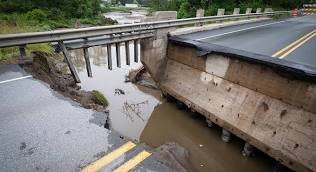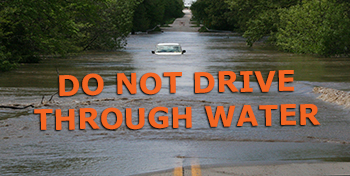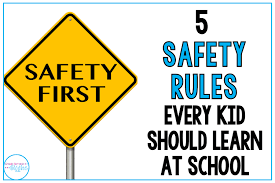Disaster Assistance: Providing Support in Times of Crisis
When natural disasters strike, they can leave a trail of destruction and devastation in their wake. From hurricanes and floods to wildfires and earthquakes, these events can have a profound impact on communities, displacing families, destroying homes, and disrupting lives.
During these challenging times, disaster assistance programs play a crucial role in providing support and relief to those affected. These programs are designed to offer immediate aid, resources, and services to help individuals and communities recover and rebuild in the aftermath of a disaster.
Types of Disaster Assistance
Disaster assistance can come in various forms, including:
- Emergency Shelter: Providing temporary housing for individuals who have been displaced from their homes.
- Food and Water Distribution: Ensuring that affected individuals have access to essential supplies during the crisis.
- Medical Care: Offering medical assistance to those injured during the disaster.
- Cleanup and Recovery Services: Assisting with debris removal, property restoration, and other recovery efforts.
- Counseling and Mental Health Support: Providing emotional support for individuals dealing with trauma and loss.
The Role of Government Agencies and Nonprofit Organizations
In the United States, disaster assistance is often coordinated by government agencies such as the Federal Emergency Management Agency (FEMA) at the federal level, as well as state and local emergency management agencies. These agencies work together to assess the needs of affected areas and provide necessary assistance in a timely manner.
In addition to government agencies, nonprofit organizations also play a critical role in disaster relief efforts. Organizations like the American Red Cross, Salvation Army, and local community groups mobilize volunteers, resources, and donations to support those impacted by disasters.
How You Can Help
If you want to make a difference in times of crisis, consider volunteering with local disaster relief organizations or donating to reputable charities that provide disaster assistance. Your support can help ensure that those affected by disasters receive the help they need to recover and rebuild their lives.
7 Essential Tips for Effective Disaster Preparedness and Assistance
- Stay informed about potential disasters in your area.
- Create an emergency plan for you and your family.
- Prepare an emergency kit with essential supplies.
- Know evacuation routes and shelter locations.
- Keep important documents in a safe place or digitally stored.
- Check on neighbors, especially the elderly or those with disabilities.
- Follow instructions from local authorities during a disaster.
Stay informed about potential disasters in your area.
It is crucial to stay informed about potential disasters in your area to ensure preparedness and timely response. By monitoring weather alerts, local news updates, and official notifications from emergency management agencies, you can stay ahead of possible threats and take necessary precautions. Being aware of potential disasters allows you to plan effectively, evacuate if needed, and access available disaster assistance resources promptly. Stay informed to protect yourself, your loved ones, and your community in times of crisis.
Create an emergency plan for you and your family.
Creating an emergency plan for you and your family is a crucial step in preparing for potential disasters. By establishing a clear plan of action ahead of time, you can ensure that everyone knows what to do in case of an emergency. This plan should include evacuation routes, designated meeting points, important contact information, and a list of essential items to grab in a hurry. Taking the time to create and practice your emergency plan can help keep your loved ones safe and organized during challenging times.
Prepare an emergency kit with essential supplies.
Preparing an emergency kit with essential supplies is a crucial step in disaster preparedness. Having a well-stocked kit can make a significant difference in ensuring your safety and well-being during emergencies such as natural disasters. Include items like non-perishable food, water, first aid supplies, flashlights, batteries, and important documents in your emergency kit. By being proactive and assembling these supplies ahead of time, you can better cope with unforeseen circumstances and increase your resilience in the face of adversity.
Know evacuation routes and shelter locations.
It is essential to be prepared for emergencies by knowing evacuation routes and shelter locations in your area. Understanding these crucial details can make a significant difference in ensuring your safety and the safety of your loved ones during a disaster. By familiarizing yourself with evacuation routes and shelter locations ahead of time, you can act swiftly and decisively when faced with an emergency situation, helping you evacuate to a secure location efficiently and effectively.
Keep important documents in a safe place or digitally stored.
It is crucial to keep important documents in a secure location or digitally stored to ensure quick access in times of disaster. By safeguarding essential paperwork such as identification, insurance policies, medical records, and financial documents, individuals can streamline the process of seeking disaster assistance and rebuilding their lives after a crisis. Storing these documents securely can help expedite recovery efforts and facilitate communication with relevant authorities and relief organizations during challenging times.
Check on neighbors, especially the elderly or those with disabilities.
During times of disaster, it is essential to check on neighbors, particularly the elderly or individuals with disabilities, to ensure their safety and well-being. These vulnerable populations may require additional assistance and support during emergencies, such as access to medical care, transportation, or shelter. By reaching out to neighbors in need, we can provide crucial aid and comfort, fostering a sense of community resilience and solidarity in the face of adversity.
Follow instructions from local authorities during a disaster.
During a disaster, it is crucial to follow instructions from local authorities. These instructions are issued to ensure the safety and well-being of individuals and communities in the face of an emergency. By heeding the guidance provided by local authorities, such as evacuation orders or sheltering instructions, individuals can minimize risks and increase their chances of staying safe during a crisis. Cooperation with authorities is essential for effective disaster response and can help prevent further harm or injury. Remember, staying informed and following official directives can make a significant difference in navigating through challenging situations and receiving necessary assistance promptly.




